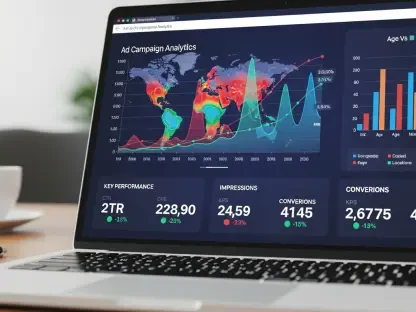Imagine a bustling e-commerce landscape where businesses, from nimble startups to global giants, are racing to capture customer loyalty amid fierce competition. With millions of online transactions happening daily, the ability to manage customer relationships effectively can make or break a company’s success. This is where Customer Relationship Management (CRM) systems like Salesforce and HubSpot come into play, offering powerful tools to streamline sales, enhance marketing, and build lasting connections. Both platforms have carved out significant spaces in the market, yet they cater to different needs and scales. This comparison dives deep into their features, strengths, and limitations to help businesses navigate the critical decision of choosing the right CRM for their unique goals.
Understanding Salesforce and HubSpot CRM: Background and Relevance
Salesforce CRM, a pioneer in cloud-based solutions, emerged over two decades ago with a mission to transform how enterprises manage customer interactions. Primarily targeting large organizations with complex needs, it offers a comprehensive suite for sales, marketing, and service management. Its robust ecosystem is designed to handle vast data volumes and intricate workflows, making it a staple for industries like retail and finance that demand high-level customization.
HubSpot CRM, on the other hand, entered the scene later with a focus on inbound marketing and simplicity, initially catering to startups and small to medium-sized enterprises (SMEs). Its core purpose is to provide accessible tools for managing contacts, automating marketing, and driving sales without overwhelming users. HubSpot’s appeal lies in its user-friendly design, making it a preferred choice for e-commerce businesses just starting to scale.
The relevance of both platforms in today’s business environment cannot be overstated. For e-commerce, where personalized customer experiences directly impact revenue, these CRMs centralize data to enable targeted campaigns and seamless communication. Salesforce often powers global retailers with its depth, while HubSpot supports growing online stores with agility. Their widespread adoption—Salesforce dominating enterprise markets and HubSpot leading among SMEs—sets the stage for a nuanced comparison of how each can serve distinct operational needs.
Feature-by-Feature Comparison: How They Stack Up
Customization and Scalability
When it comes to customization, Salesforce stands out with its unparalleled configurability, allowing businesses to tailor nearly every aspect of the platform to specific requirements. Its flexibility supports intricate workflows, ideal for multinational e-commerce firms needing unique processes across regions. However, this depth often demands technical expertise to implement effectively.
HubSpot, by contrast, prioritizes simplicity in customization, offering intuitive tools that let users adapt features without deep technical know-how. While this suits smaller e-commerce startups looking to tweak pipelines or marketing templates quickly, it falls short for enterprises requiring highly specialized setups. HubSpot’s scalability comes through modular hubs, though it may not match Salesforce’s capacity for massive, bespoke operations.
In terms of scalability, Salesforce effortlessly accommodates large-scale growth with its extensive infrastructure, handling thousands of users and complex data sets. HubSpot scales well for SMEs by adding features as needed, but larger businesses might encounter limitations in depth. For instance, a global retailer might rely on Salesforce to manage diverse markets, while a growing online store could use HubSpot to expand from local to regional sales with ease.
Pricing and Accessibility
Pricing structures reveal stark differences between the two platforms, reflecting their target audiences. Salesforce starts at around $25 per user per month for basic plans, with enterprise solutions often requiring custom quotes that can climb significantly higher. This cost aligns with its comprehensive offerings but may deter smaller firms without substantial budgets.
HubSpot, conversely, offers a free plan that includes essential CRM functionalities, making it highly accessible for startups on tight budgets. Paid tiers begin at approximately $18 per month, though costs can escalate with additional users or advanced features across its hubs. This affordability appeals to SMEs, yet businesses must consider potential price hikes as they grow.
Accessibility extends beyond cost to ease of implementation. Salesforce often requires dedicated support or in-house experts for setup and maintenance, which adds to its expense but ensures tailored solutions. HubSpot’s intuitive design allows quick onboarding with minimal external help, supported by resources like HubSpot Academy. The trade-off lies in Salesforce delivering immense value for intricate needs versus HubSpot offering immediate usability at a lower entry cost.
Integrations and User Experience
Integration capabilities highlight another area of divergence, with Salesforce boasting a vast ecosystem that includes native tools like Marketing Cloud and Service Cloud, alongside thousands of third-party apps via its AppExchange. This makes it a powerhouse for e-commerce operations needing seamless connections across multiple systems, from inventory to customer support.
HubSpot also excels in integrations, particularly with popular e-commerce platforms like Shopify, and offers a solid range of third-party connections. However, its scope is narrower compared to Salesforce, focusing more on marketing and sales tools rather than a full enterprise suite. This can suffice for smaller businesses but might limit those with broader operational demands.
User experience further differentiates the two. HubSpot’s clean, beginner-friendly interface ensures quick adoption by teams with varying tech skills, bolstered by extensive training materials. Salesforce, while offering powerful dashboards and analytics, presents a steeper learning curve that can slow initial use without proper guidance. For e-commerce teams, HubSpot’s ease often boosts productivity faster, whereas Salesforce’s depth rewards patience with unmatched insights once mastered.
Challenges and Limitations: Key Considerations
Salesforce, despite its strengths, poses notable challenges, particularly its high implementation costs that can strain even well-funded enterprises. The platform’s complexity often necessitates specialized expertise for setup and ongoing management, which adds to expenses and time. For smaller e-commerce businesses, its extensive features might feel like overkill, providing more functionality than needed.
HubSpot’s limitations surface in its restricted depth, especially in lower-tier plans where advanced features are locked behind paywalls. Its customization options, while user-friendly, lack the flexibility Salesforce offers, potentially hindering businesses with unique needs. Additionally, costs can rise unexpectedly as companies scale, making long-term budgeting a concern for growing SMEs.
Practical considerations also come into play when evaluating these CRMs. Training requirements differ significantly, with Salesforce often demanding formal sessions or dedicated staff, while HubSpot’s resources ease self-learning. Budget constraints and the anticipated growth trajectory of a business further influence the decision, as choosing a mismatched tool could lead to inefficiencies or the need for costly migrations down the line.
Final Verdict: Which CRM Fits Your Needs?
Summarizing the critical distinctions, Salesforce emerges as the go-to for enterprise-grade scalability and deep customization, catering to large e-commerce operations with complex, global demands. Its robust features and integrations justify the investment for businesses equipped to handle its intricacies. HubSpot, meanwhile, shines with affordability and simplicity, making it a natural fit for startups and SMEs prioritizing ease of use and quick deployment.
Recommendations hinge on business size and strategic goals. Large retailers or e-commerce firms with multifaceted needs should gravitate toward Salesforce for its ability to manage vast operations and deliver detailed analytics. Startups and smaller online stores, particularly those mindful of budget, will find HubSpot’s free plan and intuitive design more aligned with their immediate priorities.
Looking back, the exploration of these platforms revealed how tailored solutions drive success across varied business landscapes. As a next step, companies should audit their financial resources, technical capabilities, and expansion plans to ensure alignment with the chosen CRM. Testing both systems through free trials or demos could provide firsthand insight, while consulting with current users might uncover practical tips. Ultimately, the focus should remain on building a foundation that not only addresses today’s challenges but also anticipates tomorrow’s growth.









